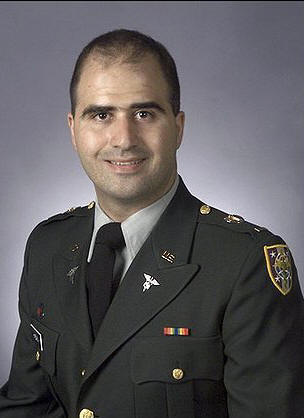by Akim Reinhardt
 On November 5, 2009, U.S. Army Major Nidal Hasan opened fire on soldiers and civilians alike at the Fort Hood military base in Killeen, Texas. He killed thirteen people, including a pregnant woman, and wounded thirty-two more. Hasan is now awaiting a military trial that is scheduled to begin on April 16.
On November 5, 2009, U.S. Army Major Nidal Hasan opened fire on soldiers and civilians alike at the Fort Hood military base in Killeen, Texas. He killed thirteen people, including a pregnant woman, and wounded thirty-two more. Hasan is now awaiting a military trial that is scheduled to begin on April 16.
There is ample evidence that Major Hasan was working on behalf of Al Qaeda when he launched the attack. He had been in communication with Al Qaeda leader Anwar al-Awlaki, and was very likely acting on Anwar al-Awlaki's orders. That would be the same Anwar Al-Awlaki who was killed in Yemen two years later when a CIA-led joint operation struck his vehicle with a Hellfire missile fired from a predator drone.
There is now little doubt that Hasan's bloody rampage was a planned military strike by an Al Qaeda operative against the U.S. military. But that's not how the U.S. military wants to frame it.
Instead of classifying Hasan's attack as combat or an act of terrorism, the Department of Defense is officially deeming it an episode of “workplace violence.” Essentially, they're saying Hasan was just another disgruntled worker who “went postal.”
This stance defies evidence, including that which the military itself will be presenting at Hasan's upcoming court martial. For example, the prosecution is using an expert witness named Evan Kohlmann who says Hasan meets numerous criteria that define him as a homegrown terrorist.
Beyond defying logic and truth, labeling Hasan's attack as workplace violence has very real consequences for the survivors and the loved ones of those who died. On a ceremonial level, the military is refusing to hand out Purple Hearts, the medal awarded for injuries sustained in combat. On a more practical level, as the lawsuit waged by the survivors asserts, the designation of “workplace violence” also means that survivors and the loved ones of those killed are receiving lower priority for treatment and are being denied benefits that would have come their way if this was officially recognized as combat.
As one might imagine, this has led to no shortage of outrage. There has even been a Congressional effort to pass federal legislation that would grant combatant status to all casualties. The Fort Hood Families Benefits Protection Act was first introduced two years ago by Congressman John Carter (R-Texas) and Senator John Cornyn (R-Texas), but it died in committee.
Carter reintroduced the bill again earlier this year, but withdrew it under pressure from the military. They claim that publicity stemming from the legislation, the awarding of medals, and the classification of Hasan's action as combat or terrorism, will make it difficult to successfully prosecute him in his upcoming court martial. Upon withdrawing the bill, Carter recently stated:
“After additional investigation into the potential implications of pre-trial publicity, I am postponing any future publicity on these bills at this stage of Maj. Hasan's trial. However, the victims of this tragic shooting fully quality for compensation pay and purple heart recognition.”
Read more »

